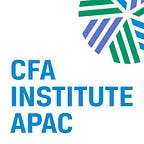India’s new budget
Par for the course amid unrealistic market expectations
By Saurabh Mukherjea, CFA
The second budget presentation of the Modi government on 28 February 2015 was a relative improvement over its first outing in July 2014. For the FY16 budget, the government focused on the following key changes:
(1) Increased indirect tax rates to boost indirect tax revenue growth
The government hiked the services tax rate from 12.36% to 14% and the excise duty rate from 12.36% to 12.5%. These rates can be expected to increase over the course of the next few years in a bid to prepare for general sales tax implementation.
(2) Outlined a roadmap for the reduction of corporate tax rates
The government announced the gradual reduction in the corporate tax rate from 30% to 25% over the next four years and the simultaneous removal of exemptions. The first cut in the corporate tax rate, however, is expected to be administered in FY17, not in FY16.
(3) Curtailed total expenditure growth; incremental INR0.7 trillion allocated to public investments
The government limited total expenditure growth to 5.7% year-on-year (same as in FY15), keeping plan expenditure unchanged at INR4.65 trillion while increasing non-plan expenditure by INR1 trillion or 0.7% of GDP. Compared to FY15, the government decided to allocate an extra sum of INR1.3 trillion for public investments in FY16 (i.e. 0.9% of GDP), with INR0.7 trillion being the capex-related component (i.e. 0.5% of GDP). The sectors that this incremental expenditure is likely to focus on include rural roads, low cost housing, power generation, and railways.
(4) Deferred the goal of achieving a fiscal deficit of 3% of GDP
The government opted to show a higher fiscal deficit of 3.9% of GDP in FY16 as against the initial target of 3.6% of GDP. The government will now target a fiscal deficit of 3% of GDP in in FY18.
There is no compelling vision or agenda emerging from the above: if the government wants to revive the economy through government capex, the outlay above won’t do it. On the other hand, if it wants to show fiscal rectitude, failing to meet the self-stated fiscal deficit target of 3.6% for FY16 and 3% for FY17 does not make sense. If it wants to signal to India Inc. that the government is on their side, then not cutting the corporate tax immediately (from FY16 onwards) is perplexing.
As is mandatory in budget speeches, the finance minister spoke about his focus on the infrastructure sector. For once, there was some substance in the government’s commitment to the sector.
First, the finance minister allocated an extra 0.5% of GDP explicitly for capex (with a likely focus on roads and railways). Second, he introduced the intriguing concept of “plug & play” projects i.e. projects which will be pre-cleared by the relevant government bodies. Encouraging as these announcements are, the large listed private sector infra companies are unlikely to benefit from them. The main beneficiaries are likely to be the smaller infra companies (e.g. small cap road builders with healthy balance sheets) and public sector entities (such as the National Thermal Power Corporation) with strong balance sheets and a willingness to build for modest ROEs.
The one negative surprise was that the finance minister seems to be saying that all exemptions from the standard corporate tax rate will gradually be phased out from FY17 onwards. This would appear to suggest that corporates (infra companies, special economic zone developers) that currently pay Minimum Alternate Tax (MAT) could end up paying higher taxes post-FY17. However, since many of these MAT beneficiaries are already locked into prolonged tax disputes with the authorities, it is unlikely that they will materially be disadvantaged by the gradual abandonment of corporate tax exemptions. (Foreign companies such as Shell, Vodafone, and Nokia have faced tax cases in India.)
The budget is, to be fair, a realistic affair amid unrealistic expectations created in the financial community going into the budget.
From the perspective of the incipient of economic recovery, we see the budget as being a relatively neutral event.
However, given the deferment of the Government Anti-Avoidance Rules (which are aimed at minimizing tax avoidance, such as routing profit to tax havens) by two years and the explicit clarity from the foreign minister that foreign institutional investors (FIIs) operating from within India will not be deemed to be creating “permanent establishment” risk, the budget should be received favorably in most quarters of the FII community.
Saurabh Mukherjea, CFA, is CEO, Institutional Equities, Ambit Capital in Mumbai. He is a member of the Indian Association of Investment Professionals (IAIP), the CFA Institute society in India.
All posts are the opinion of the author. As such, they should not be construed as investment advice, nor do the opinions expressed necessarily reflect the views of CFA Institute or the author’s employer.
Follow IAIP on twitter @iaipcfa.
Facebook: https://www.facebook.com/IAIP.CFA
